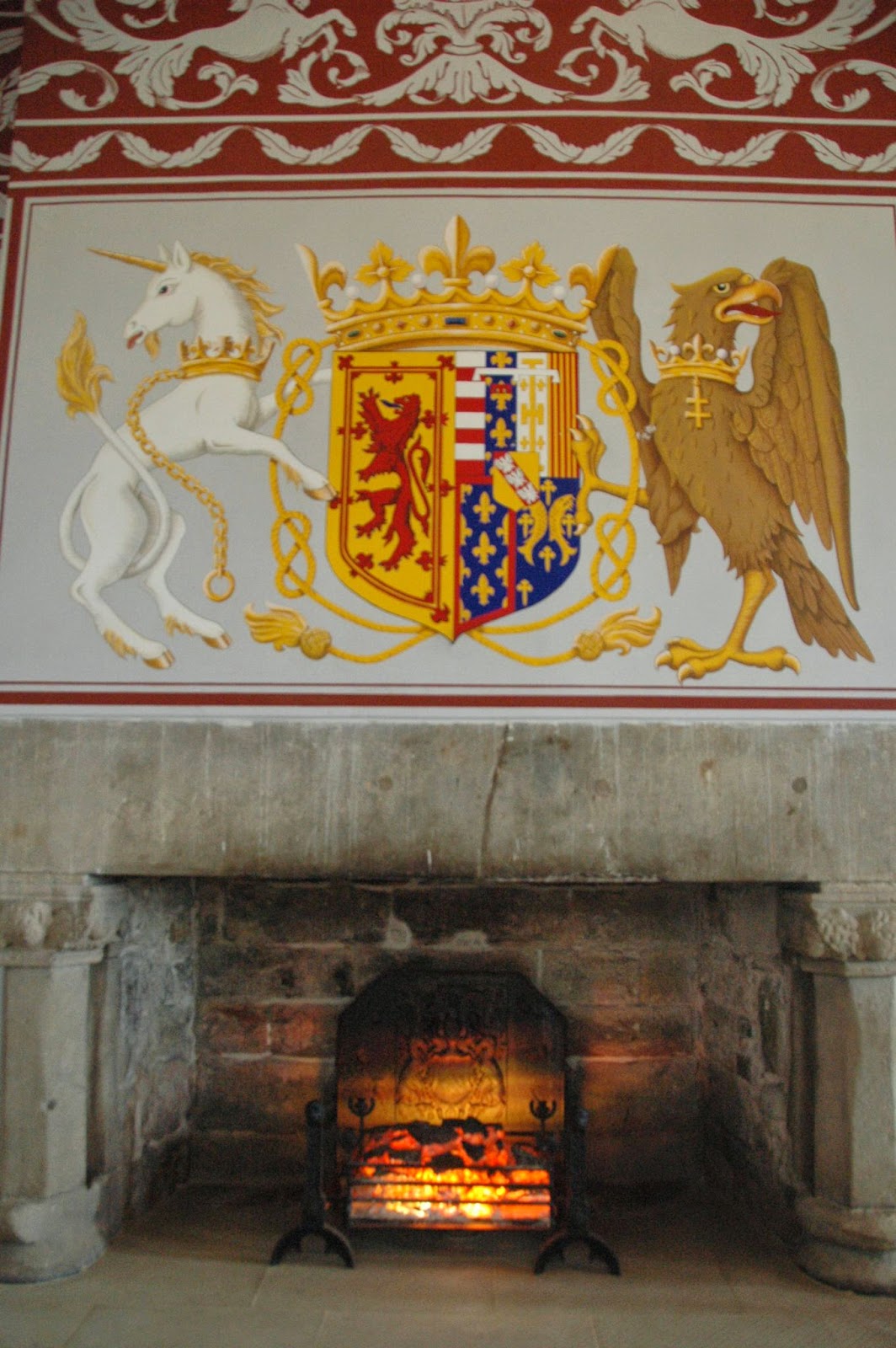Today we decided to take a punt, and make for the Battlefield at Bannockburn. It is recommended that you pre-book for the Battle of Bannockburn Experience, but we took the chance and, again, the Hams land on their feet — we were able to get straight in to the next show. And show it is! A guide takes you over a 3D simulation of the battlefield, highlighting points of interest in the computer animation with a laser pointer. This may sound dry, but the animation and its commentary is brilliant, and the 'guide' was a cockney with a cheeky sense of humour — a most entertaining (and informative) 15-minute presentation. We were then let loose on the rest of the centre — a couple of 3D movies introducing Robert the Bruce and Edward II (the two antagonists), and another which tracks the repercussions of Bannockburn. Computer gamers can come in and play an interactive war game on the same battlefield — the show and the game alternate throughout the day in the same room. There are other displays — one of the genealogy and heraldry of the main participants, one with superb computer animations of many of the participants in the battle telling their own stories. And then you are let out to the monuments themselves — the Bannockburn memorial, and a statue of Robert the Bruce that has become iconic.
The memorial has been newly refurbished, because June 23 and 24, 2014, was the 700th anniversatry of the battle. There is a wooden perimeter to the top of the wall round the memorial and flagpole, and it carries a poem newly commisioned for the site:
Here lies our land: Every airt
Beneath swift clouds. Glad glints of sun,
Belonging to none but itself.
We are mere transients, who sing
Its westlin winds and fernie braes,
Northern lights and siller tides,
Small folk playing our part.
Come ye, the country says,
You win me who take me most to heart.
Beneath swift clouds. Glad glints of sun,
Belonging to none but itself.
We are mere transients, who sing
Its westlin winds and fernie braes,
Northern lights and siller tides,
Small folk playing our part.
Come ye, the country says,
You win me who take me most to heart.
We must also remember that the song Flower of Scotland, by the Corries, now Scotland's sporting anthem (and which Warren hasn't been able get out of his head since singing it with the Brisbane Chorale at Brisbane International Airport to welcome supporters for the Rugby Union tournament held in Ausralia last year), refers to the Battle of Bannockburn:
Oh flower of Scotland, when will we see your likes again,
That fought and died for your wee bit hill and plain,
And fought against him, proud Edward's army,
And sent him hame again tae think again.
That fought and died for your wee bit hill and plain,
And fought against him, proud Edward's army,
And sent him hame again tae think again.
'He who holds Stirling, holds Scotland'
Traditional saying
One thing that you cannot do here is to walk the battlefield. The National Trust site is indeed a part of the battlefield, but most of the significant action took place in parts now occupied by the City of Stirling! But the battle was in fact a battle for the possession of Stirling Castle. If Sir Phillip Mowbray did not vacate Stirling Castle by midsummer's day, 1314, battle would be joined. It was a little more complicated, but in essence, this is what happened. After the battle, Mowbray was denied entrance back into the castle, and had to slink away. So Stirling Castle, another part of the Bannockburn story, was the next place we visited.
Stirling Castle has a long history, but from 1794 to 1964 it was used as a military barracks for various Scottish army units, being allowed to lose all of its splendour, and falling into a state of disrepair. In 1906 Edward VII transferred its responsibility from the War Office to the Office of Works (now Historic Scotland), who, once the military took their leave, have refurbished the castle magnificently, and it is now a joy to go through it. Tapestries have been prepared to replace the ones that have been lost, the rooms have been repainted to their former glory, the Stirling Heads — panels with painted wooden heads that once graced the King's Inner Hall of James V (of Scotland), and which had made their way into private hands or had been lost completely — have been retrieved or recreated from drawings by Jane Ferrier (1767-1846), who had tracked most of them down.
We spent fully 4 hours exploring Stirling Castle, then left to check out how we could get to the Wallace Memorial tomorrow morning. Having done that, we retired to a parking area just beneath Stirling Castle — not a bad view to wake up to in the morning!
Distance driven — today, 31 miles ( 50 km ); to date, 5,362 miles ( 8,630 km )












No comments:
Post a Comment